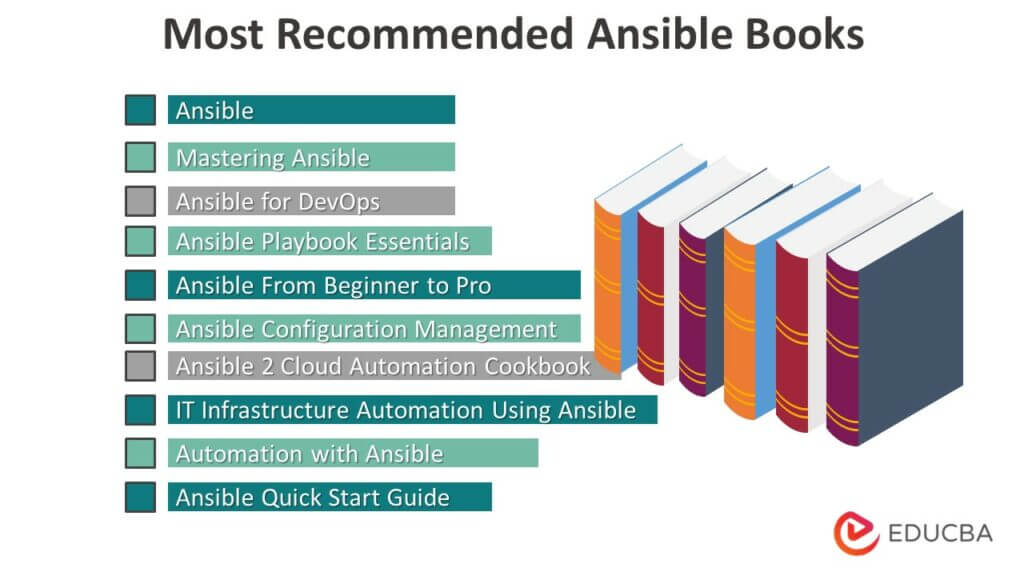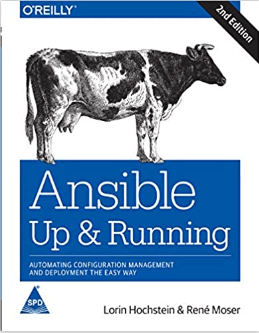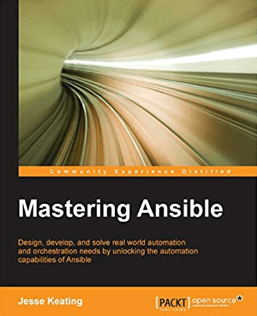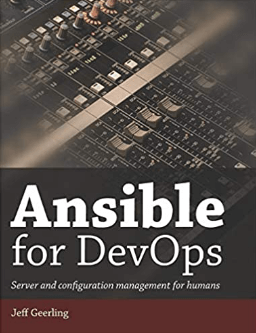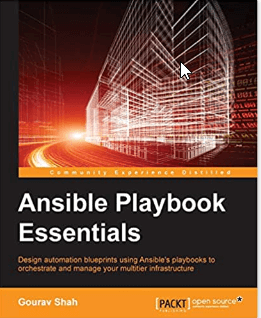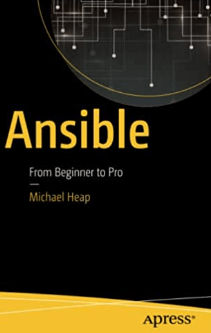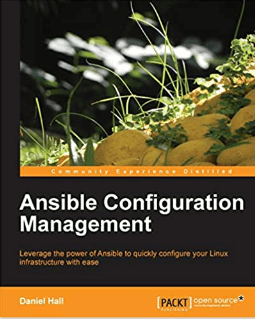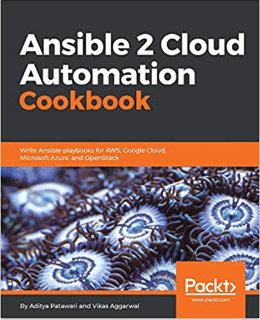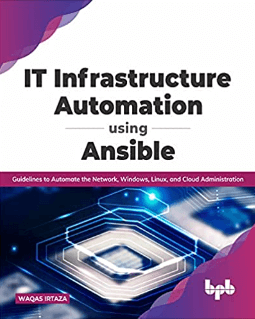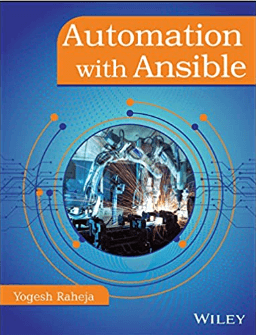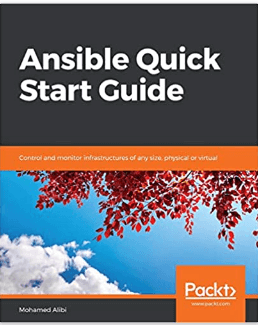Must Read Ansible Books
Ansible has become a vital tool for DevOps engineers, network administrators, and IT professionals looking to automate their infrastructure. With a wide range of applications, from configuration management to cloud automation, Ansible has become an essential skill in the IT industry. Many resources are available to learn Ansible, including books covering Ansible’s various aspects in detail.
Key Highlights
- It helps readers compare and contrast the various Ansible books by highlighting their unique features, strengths, and weaknesses.
- Guides readers in choosing the right Ansible book for their specific needs and level of expertise.
- Aids readers learn more about Ansible and its role in IT infrastructure automation by providing key takeaways and insights from each book.
Here, we will dig deep into some of the top Ansible books and highlight their key takeaways to help you decide which book (s) to choose for your learning journey.
Most Recommended Ansible Books
Let us discuss the reviews and takeaways of the Ansible Books:-
Book #1: Ansible: Up and Running
Author: Lorin Hochstein and Rene Moser
Review
“Ansible: Up and Running” by Lorin Hochstein and Rene Moser is an excellent guide for anyone who wants to learn how to use Ansible to automate their IT infrastructure. The book provides an exhaustive overview of Ansible’s core features and how they help automate configuration management, deployment, and orchestration tasks. It includes practical examples, code snippets, and best practices to help readers become proficient in using Ansible. The authors have explained complex concepts straightforwardly and concisely, making it an easy read for beginners and experienced users alike.
Key Takeaways
- A practical guide for getting started with Ansible and its core features.
- It covers topics such as deploying applications, managing configurations, and automating orchestration.
- Provides best practices for using Ansible in production environments.
- Emphasizes the importance of automating complex IT infrastructure to simplify tasks and improve efficiency.
Book #2: Mastering Ansible
Author: Jesse Keating
Review
“Mastering Ansible” by Jesse Keating is a comprehensive guide that covers the advanced features of Ansible. The book covers advanced playbook development, Ansible Tower, Ansible Galaxy, and Ansible modules. It also includes real-world use cases and examples, making it an excellent resource for experienced Ansible users. The book is well-curated, with clear explanations and practical examples.
Key Takeaways
- An advanced guide to using Ansible for IT infrastructure automation.
- Covers topics such as custom modules, dynamic inventories, and roles.
- Provides real-world examples and use cases for Ansible in production environments.
- Emphasizes best practices for scalability, security, and performance.
Book #3: Ansible for DevOps: Server and Configuration Management for Humans
Author: Jeff Geerling
Review
“Ansible for DevOps” by Jeff Geerling is a complete guide to using Ansible for server and configuration management. The book covers Ansible’s essential features, including playbooks, roles, modules, and variables, with practical examples and best practices. The author has clearly and concisely explained complex concepts, making it easy for beginners and experienced users. The book also covers topics such as Ansible Tower and Ansible Galaxy, making it a comprehensive resource for Ansible users.
Key Takeaways
- A beginner-friendly guide to using Ansible for server and configuration management.
- Covers topics such as inventory management, playbook design, and role creation.
- Provides practical examples and use cases for Ansible in production environments.
- Emphasizes best practices for security, scalability, and performance optimization.
Book #4: Ansible Playbook Essentials: Design automation blueprints using Ansible’s playbooks to orchestrate and manage your multitier infrastructure
Author: Gourav Shah
Review
“Ansible Playbook Essentials” by Gourav Shah is a practical guide to using Ansible’s playbooks to manage multitier infrastructure. The book covers YAML syntax, playbooks, roles, and variables, with practical examples and best practices. The author concisely explains complex concepts, making it easy for beginners and experienced alike. The book also explores advanced topics like Ansible Tower, making it a comprehensive resource for Ansible users.
Key Takeaways
- A comprehensive guide to writing Ansible playbooks for multitier infrastructure automation.
- Covers topics such as playbook design, variables, loops, and conditionals.
- Includes practical examples and use cases for automating complex infrastructures.
- It helps readers understand how to leverage Ansible for automating repetitive tasks and streamlining IT operations.
Book #5: Ansible: From Beginner to Pro
Author: Michael Heap
Review
“Ansible: From Beginner to Pro” by Michael Heap is an extensive guide for beginners who want to learn Ansible. The book covers Ansible’s core features, including modules, playbooks, and variables, with practical examples and best practices. Overall, “Ansible: From Beginner to Pro” is an essential guide for anyone learning Ansible from scratch.
Key Takeaways
- A step-by-step guide for becoming proficient in using Ansible for IT infrastructure automation.
- Covers topics such as inventory management, playbook design, and role creation.
- Provides practical examples and use cases for Ansible in production environments.
Book #6: Ansible Configuration Management
Author: Daniel Hall
Review
“Ansible Configuration Management” by Daniel Hall is a practical guide to using Ansible for configuration management. The book covers modern use cases like Ansible Galaxy, making it a thorough aid for readers. Overall, “Ansible Configuration Management” is an excellent guide for anyone looking to use Ansible for configuration management.
Key Takeaways
- A guide to using Ansible for configuration management.
- Covers the basics of Ansible and its role in IT infrastructure automation.
- Provides practical examples and use cases for automating IT infrastructure with Ansible.
- It helps readers understand how to design effective Ansible playbooks and roles.
Book #7: Ansible 2 Cloud Automation Cookbook: Write Ansible playbooks for AWS, Google Cloud, Microsoft Azure, and OpenStack
Author: Aditya Patawari, Vikas Aggarwal
Review
“Ansible 2 Cloud Automation Cookbook” by Aditya Patawari and Vikas Aggarwal is an excellent guide to using Ansible for cloud automation. The authors have provided practical examples and best practices to help readers become proficient in using Ansible for cloud automation. The book gets into well-doing concepts like Ansible Tower, making it a vast resource for Ansible users. It is the best guide for anyone looking to automate their cloud infrastructure using Ansible.
Key Takeaways
- A guide to using Ansible for cloud automation and infrastructure as code.
- Provides practical examples and use cases for writing Ansible playbooks for cloud platforms.
- It helps readers understand how to automate complex cloud infrastructure deployments using Ansible.
Book #8: IT Infrastructure Automation Using Ansible: Guidelines to Automate the Network, Windows, Linux, and Cloud Administration
Author: Waqas Irtaza
Review
“IT Infrastructure Automation Using Ansible” by Waqas Irtaza is a practical guide to using Ansible for automating IT infrastructure. The author has provided practical examples and best practices to help readers become proficient in using Ansible for IT automation. Overall, “IT Infrastructure Automation Using Ansible” is an essential guide for anyone looking to automate their IT infrastructure using Ansible.
Key Takeaways
- A guide to using Ansible for automating network, Windows, Linux, and cloud administration.
- Provides practical examples and use cases for automating complex IT infrastructure deployments.
- It helps readers understand how to leverage Ansible for automating repetitive tasks and streamlining IT operations.
Book #9: Network Automation with Ansible
Author: Yogesh Raheja
Review
“Network Automation with Ansible” by Yogesh Raheja is a practical guide to using Ansible for network automation. The book covers topics such as playbooks and roles for network automation. The author has provided practical examples and best practices to help readers become proficient in using Ansible for network automation.
Key Takeaways
- A guide to using Ansible for network administration tasks.
- It covers Ansible’s capabilities for automating network device configuration.
- Provides practical examples and use cases for automating network operations.
Book #10: Ansible Quick Start Guide: Control and monitor infrastructures of any size, physical or virtual
Author: Mohamed Alibi
Review
“Ansible Quick Start Guide” by Mohamed Alibi is a practical guide to using Ansible for controlling and monitoring infrastructures of any size, physical or virtual. The “Ansible Quick Start Guide” is essential for anyone looking to start using Ansible for infrastructure control and monitoring quickly.
Key Takeaways
- A beginner-friendly guide to using Ansible for IT infrastructure automation.
- Covers the basics of Ansible and its role in IT infrastructure automation.
- Provides practical examples and use cases for using Ansible in production environments.
Recommended Articles
Our Top 10 Ansible Books compilation aims to be helpful to you. For more such Angular Books, EDUCBA recommends the following,
